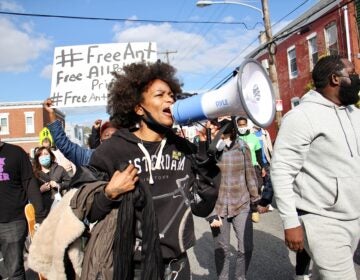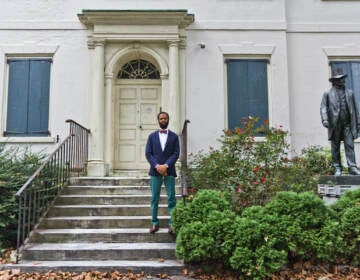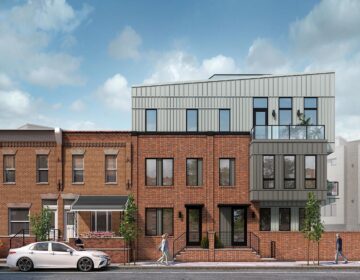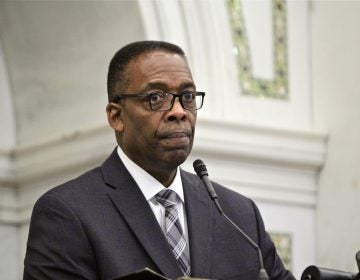Remembering Ken Steif, an urban planner who used data to make cities more just
The University of Pennsylvania professor, R&B-lover, neighborhood advocate, and beloved husband and father passed away after a battle with cancer.
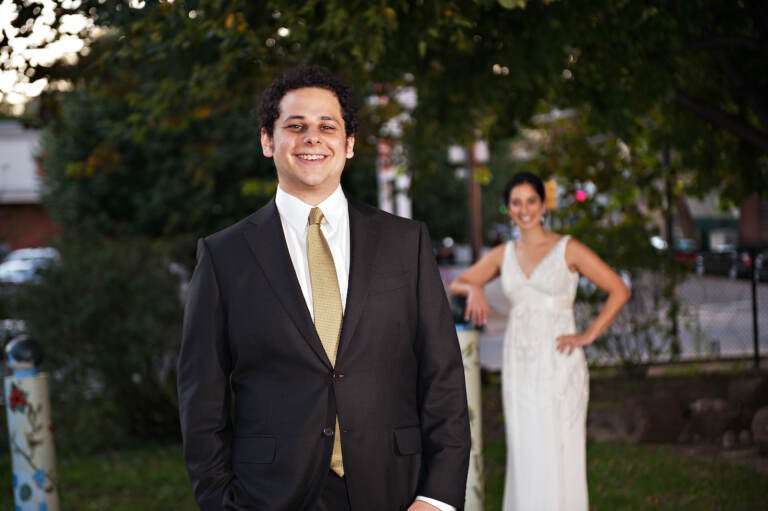
Ken Steif (Courtesy of Steif family)
On Sept. 9, 2021, three days after Dr. Kenneth Steif’s birthday, more than 200 people filled The Woodlands cemetery to say goodbye.
The University of Pennsylvania professor, funk and R&B lover, neighborhood advocate, and beloved husband and father passed away on Sept. 3, 2021 at the age of 38.
“He was one of most multi-dimensional people I’ve ever met,” said Michael Fichman, Steif’s longtime collaborator, friend, and neighbor. “Not only was he a scholar and a leader in his professional field, but he also was a talented musician who threw DJ nights across West Philly. He was the center of a bunch of social universes, and he was well-loved by many communities.”
Steif founded UPenn’s Master of Urban Spatial Analytics (MUSA) program, which taught students how to put coding and GIS to use in urban planning and public policy. It attracts students from around the world, and many of the courses have long waiting lists. This year he published a textbook, “Public Policy Analytics: Code & Context for Data Science in Government,” which distills lessons from the program. (You can buy it here, although Steif also made it available for free online.)
The MUSA program stemmed from Steif’s belief that computer coding and spatial analytics were tools that could help the public sector serve people better. Although those with the skills he helped cultivate could get a big payday in Silicon Valley or Wall Street, he believed they could be best used to make policy and planning smarter and more just.
“His work centered around this idea that so many people out there can do analytics, but it’s a better challenge to do it for public policy,” said Ben Dodson, a student in the MUSA program. “Public policy doesn’t get as much attention as Silicon Valley. But it’s using all the same tools to figure out the best way to do these things [in a public sector context] with limited resources.”
Dodson says two cases really stuck in his memory. Steif told his students about a formula that Florida’s Broward County used to predict recidivism for inmates when determining parole. He conducted open source work to unpack the bias built into the official algorithm, showing that the data sets had disparate impact on several marginalized demographic groups and that people were suffering as a result. Steif also built a tool to identify risk in Child Protective Services case files, allowing the city of Richmond, Virginia to prioritize where caseworkers should spend their time.
“He really drove home this idea that you can use analytics to sell hyper-targeted ads for Facebook, but it’s really about these public policy projects that can have huge outcomes on people’s lives,” Dodson said.
Many of Steif’s chief professional accomplishments came in the last seven years, as he waged a battle with a rare form of cancer. His leg was amputated in 2016, suppressing the disease for almost half a decade. Even when it surged late last year he kept teaching, finished his book, and worked on a new tool that sought to square the circle between community engagement and positive planning outcomes. The program predicts a neighborhood’s future based on market and demographic trends, while allowing residents to weigh in on how they would like to see their community evolve.
Steif was a resident of the first neighborhood where the tool is being put to use. Spruce Hill is a neighborhood of gorgeous Victorian townhomes and walk-up apartment buildings on the border of the University of Pennsylvania. In recent decades, the neighborhood, and its surrounding communities, have been home not only to academics and graduate students, but a racially and economically diverse mixture of families, collective houses, anarchist enclaves, immigrant businesses, and underground shows.
But as the real estate market has heated up in the last 15 years, the neighborhood has struggled with skyrocketing housing prices, demolition of historic buildings, and battles over zoning.
Steif did not just observe the forces reshaping the neighborhood he loved. He also took an active hand in shaping them. In 2017, he was elected to the board of the Spruce Hill Civic Association.
In that role, as in his work, he tried to bring a sense of justice and nuance. In a 2017, in email about a zoning change intended to protect Victorian townhomes from demolition without traditional historic protections, he carefully analyzed the trade-offs between preservation and affordability. He did not land wholly on either side, but debated himself using hyperlinks to relevant sources.
“Planners must try to strike a balance,” Steif wrote to PlanPhilly. “How can we regulate without being too burdensome? How can we ensure that future residents, regardless of their income, can enjoy living in these diverse, historic communities?”
In a policy landscape often dominated by acrimony and bad faith, he always offered fair and generous interpretations of current events. (That’s why PlanPhilly quoted Steif often about zoning and housing issues.) He brought that perspective to his community activism too, and he wouldn’t let others slide into easy or self-serving dogmas.
“He was very generous, very soft-spoken, but he could send stilettos your way,” said Barry Grossbach, chair of the Spruce Hill Civic’s zoning committee. “He could burst balloons when people were feeling really good about themselves, barbs that would puncture the self-satisfaction at the table. Sometimes when you are looking at hard truths it’s uncomfortable.”
.@KenSteif, you were a real one. You are missed in our community. A brilliant mind, heart of gold, and a mentor to many. https://t.co/44GMbh5bI0
— Ellen Kwon (@ellen_hwang_phl) September 13, 2021
The neighborhood plan Steif hoped to implement in Spruce Hill was delayed by the pandemic, and it finally got off the ground the weekend after his funeral under the guidance of his friend and colleague Akira Rodriguez and his former student Sydney Goldstein.
The idea is to bring engagement to the community, giving residents an opportunity to learn about development, urban history, and land use policy through short videos and interactive maps of zoning parcels. A photographic survey then allows residents to look through the various building types in the neighborhood and decide which ones they would like to see preserved.
Rodriguez unveiled the tool at the Clark Park Farmers Market last Saturday. More than 100 people took the survey.
“Ken was very much about helping people argue with correct information,” said Rodriguez, a professor of city and regional planning at the University of Pennsylvania. “He liked when people argued, he liked when they engaged, when they were passionate, when people were learning and making better decisions.”
Although the model he created can be used across the city, and outside it, it is appropriate that it is first being used in Spruce Hill. He loved this corner of West Philadelphia, with all its vibrant street life, active porch culture, its intellectual and political engagement. Steif moved there in 2000 to attend Drexel (although he ended up getting his bachelor’s from Temple). He hosted block parties, house parties, DJ nights at the long-gone Elena’s Soul Lounge, and baseball games.
“He liked his music funky, his food spicy, and his neighborhood funky,” Fichman said. “When you live here a long time there really is a serious community feel that other parts of the city don’t have. At his service, you could really feel that. It was in the neighborhood and he was a neighborhood guy.”
Rest in power @KenSteif pic.twitter.com/yqx9cEepri
— Radjaw (@Radjaw) September 8, 2021
Steif is survived by his wife, Diana Owens Steif, and their sons Emil and Malcolm Steif, as well as his mother Caroline Werth, father, Paul Steif, and brother, Dan.
Steif had known since 2021 that his prognosis was not good. He prepared a plan for his own funeral, including picking out the musical selection and penning a speech that his brother read to the assembled masses. Afterward, everyone went to Renata’s, a popular neighborhood restaurant, and then to the Ethiopian bar Gojo’s leafy back patio to drink and reminisce.
On the edge of the neighborhood he called home for 21 years, the iconic Woodlands of West Philadelphia is Steif’s final resting place. His grave is 50 feet from the community garden plot that he tended with his wife Diana.
At the funeral, Steif’s speech, laced with humor, also included parting words to his young sons.
“Find something you love to do. Try all the things until you find it. My life was grand because of my loving family and because I found something that inspires me. I turned that inspiration into a job, but rarely was it work,” wrote Steif. “You have to experiment; experience and learn. You have to talk to people — weird people; smart people; different people.”

Get daily updates from WHYY News!
WHYY is your source for fact-based, in-depth journalism and information. As a nonprofit organization, we rely on financial support from readers like you. Please give today.




